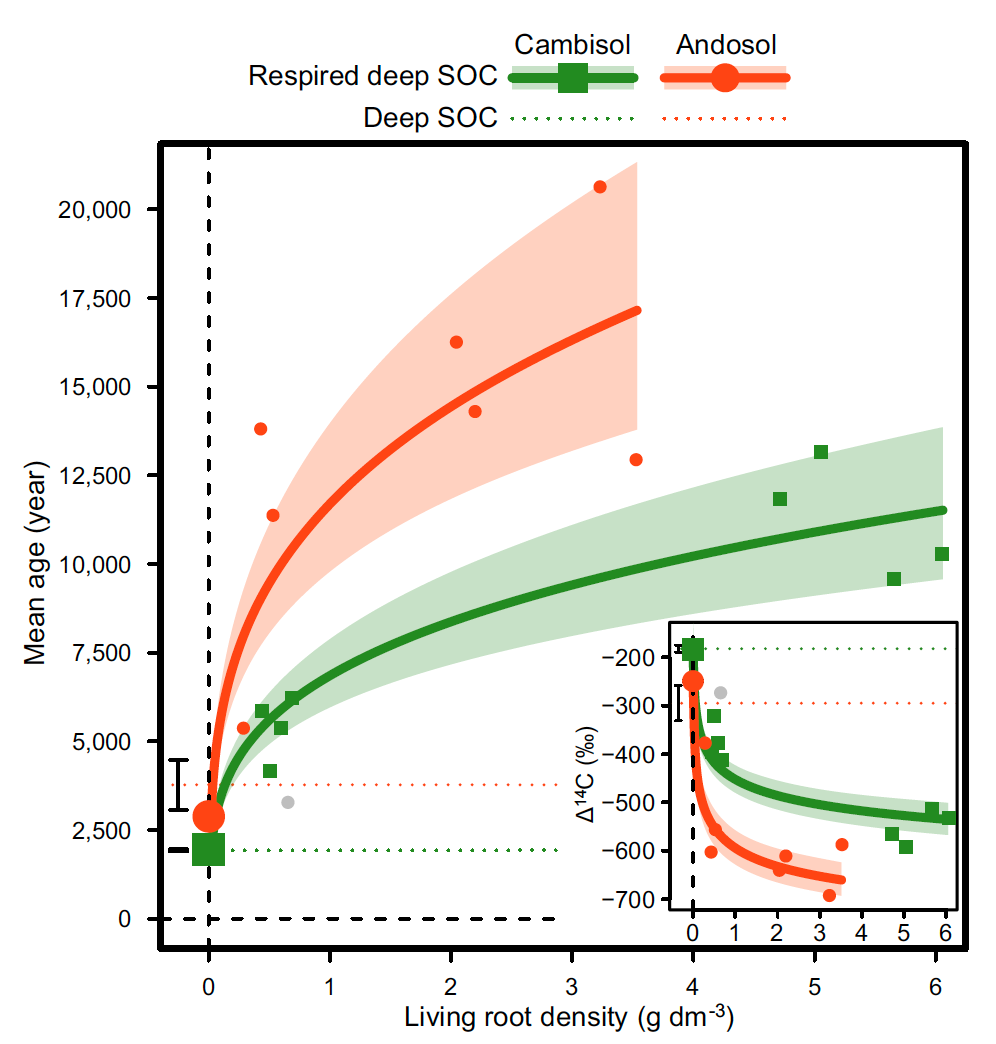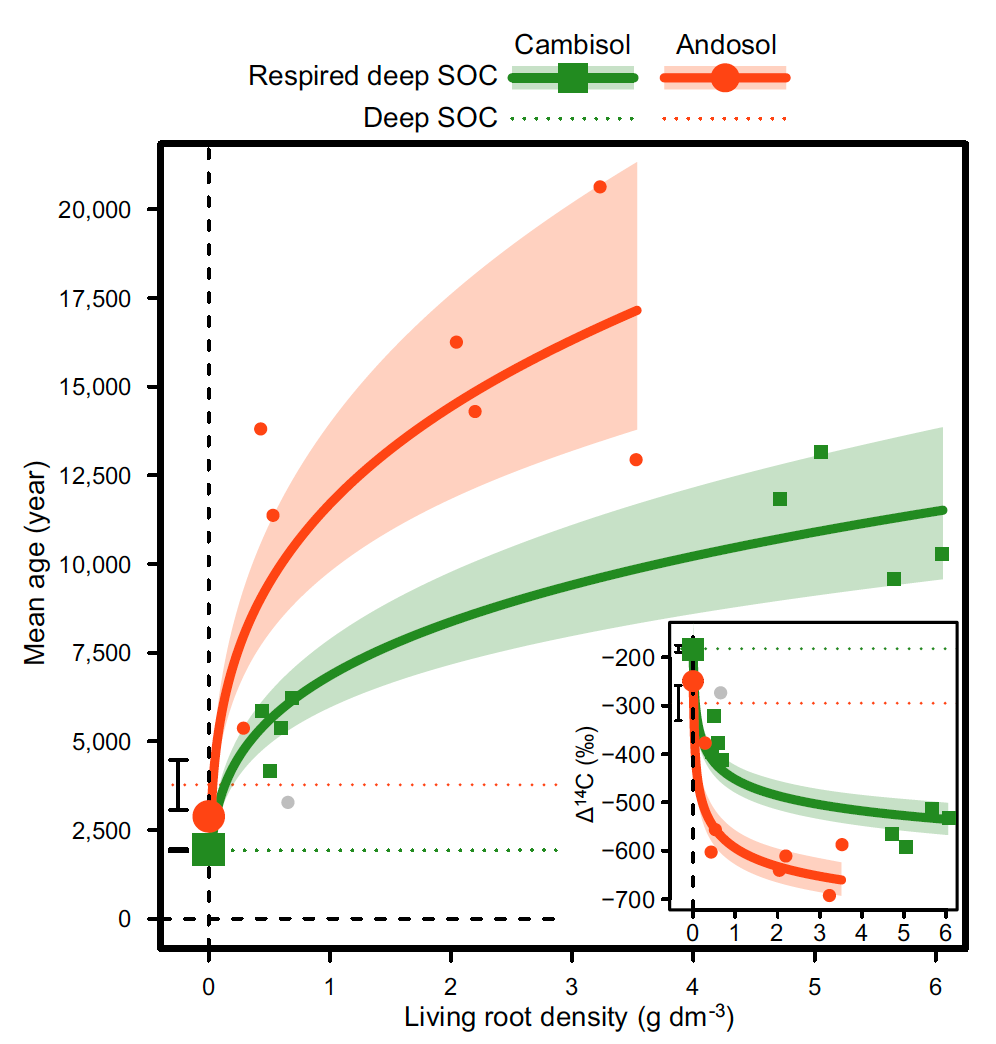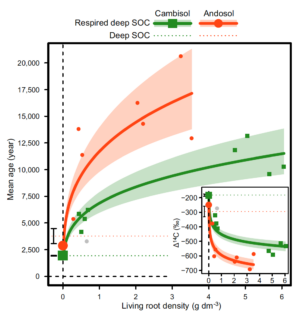La dynamique du carbone du sol est fortement contrôlée par la profondeur à l’échelle mondiale, avec une dynamique de plus en plus lente à mesure que l’on s’enfonce dans le sol. La base mécaniste reste cependant controversée, ce qui limite notre capacité à prédire les rétroactions entre le cycle du carbone et le climat. Nous combinons ici des analyses radiocarbones et thermiques avec des incubations à long terme en absence/présence de plantes marquées en continu au 13C/14C pour montrer que les contraintes bioénergétiques des décomposeurs déterminent de manière cohérente la dépendance en profondeur de la dynamique du carbone du sol dans une gamme de contextes de réactivité minérale. La lenteur de la dynamique du carbone du sous-sol est étroitement liée à la fois à sa faible densité énergétique et à l’énergie d’activation élevée de la décomposition, ce qui entraîne un « retour sur investissement énergétique » défavorable pour les décomposeurs. Nous observons également une forte accélération de la décomposition millénaire du carbone du sous-sol induite par les racines (« amorçage de la rhizosphère »), ce qui montre qu’un apport suffisant d’énergie par les racines est capable d’atténuer la forte limitation énergétique de la décomposition. Ces résultats démontrent que la persistance du carbone dans le sous-sol résulte de sa mauvaise qualité énergétique et de l’absence d’apport d’énergie par les racines en raison de leur faible densité en profondeur.

Reference: Hénneron L., Balesdent J., Alvarez J., Barré P., Baudin F., Basile-Doelsch I., Cécillon L., Fernandez-Martinez A., Hatté C., Fontaine S., 2022. Bioenergetic control of soil carbon dynamics across depth. Nature Communications 13, 7676. doi: 10.1038/s41467-022-34951-w



